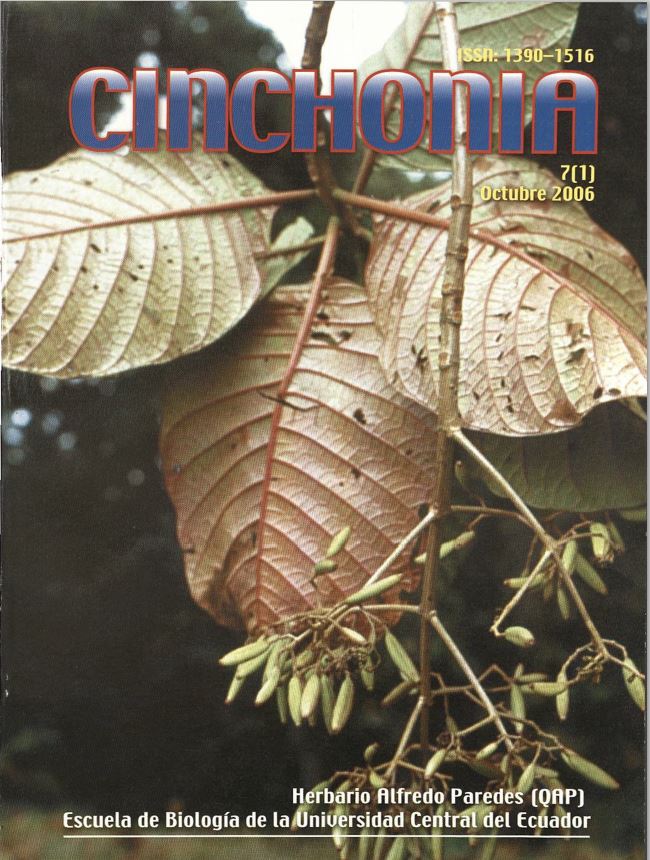ASPECTOS FLORÍSTICOS, DIVERSIDAD Y ECOLOGÍA DEL PARQUE NACIONAL SANGAY, ECUADOR
Main Article Content
Abstract
The Sangay National Park was created in 1975, ¡t has 517 725 ha. and an altitudinal gra- Cinchonia Vol. 7, # 1, 2006 41 dient that ranges from 600 to 5 230 masl. The area ineludes 10 life zones and more than 14 vegetation types. The park is located in the provinces of Tungurahua, Chimborazo and Morona Santiago; three important volcanoes: Sangay, los Altares and Tungurahua are among the remarkable features of the park. The botanic research in this area was carried out before and during the development of the management plan for the area in 1997. In each sampling site we established a linear model of 50 x 2 m x 10 transeets and a radial model of 50 x 4 m x 5 transeets (0.1 ha) to record species with DBH > 2.5 cm. Collected specimens are kept in the QAP Hcrbarium. We calculated the Simpson Diversity Index (DI) and the Sorensen Similarity Index (SI) for each site. Overall, we found 410 species, of which 37 (9%) were endemic. Density in each sampling site ranged from 96 to 302 individuáis whereas species number ranged from 11 to 111. Diversity indices pointed to a low to mean diversity. Similarity indices between sampled communities had valúes from 0 to 33%. The number of recorded species is assumed to be about 10% of the estimated flora. Future intensive studies should provlde more information about the vegetation diversity of the park, especially of epiphytes and herbaceous plants. This information will contribute to the design of adequate policies of research, conservaron and management. Ecotourism should be considered as an activity to be carried out in the area.

